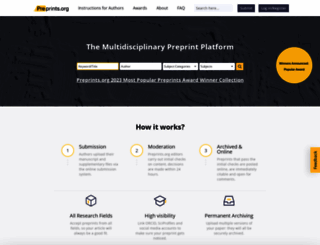Preprints.org - The Multidisciplinary Preprint Platform
Page Load Speed
1.5 sec in total
First Response
47 ms
Resources Loaded
1.2 sec
Page Rendered
221 ms

About Website
Visit preprints.org now to see the best up-to-date Preprints content for United States and also check out these interesting facts you probably never knew about preprints.org
Preprints is a multidisciplinary preprint platform that accepts articles from all fields of science and technology, given that the preprint is scientifically sound and can be considered part of academ...
Visit preprints.orgKey Findings
We analyzed Preprints.org page load time and found that the first response time was 47 ms and then it took 1.5 sec to load all DOM resources and completely render a web page. This is quite a good result, as only 30% of websites can load faster.